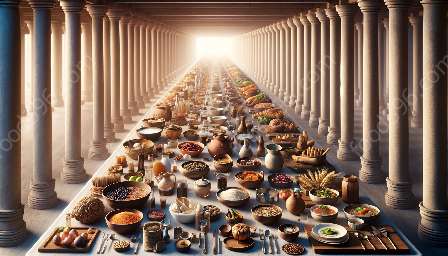The Evolution of Food Production and Preservation Methods
Food is an integral part of human culture, and over time, our methods for producing and preserving food have evolved in tandem with our culinary traditions and customs. From ancient techniques to modern innovations, the story of food production and preservation is a fascinating reflection of human ingenuity and adaptation.
Culinary Traditions and Customs
Throughout history, different cultures have developed unique culinary traditions and customs that are closely tied to their methods of food production and preservation. These customs have been influenced by a variety of factors, including geographical location, climate, available resources, and social and cultural practices.
For example, the preservation of food through salting and drying has been a common practice in many cultures for centuries. This method allowed communities to store food for extended periods, enabling them to survive through harsh winters or long periods of scarcity. In some cultures, fermentation has been a key technique for preserving food and creating unique flavors. Each culture's culinary traditions and customs have been shaped by these preservation methods, impacting not only the food itself but also the rituals and social gatherings associated with it.
Food Culture and History
The history of food culture is intertwined with the evolution of food production and preservation methods. As societies have developed and changed, so too have their methods for cultivating, preparing, and storing food. Ancient civilizations, such as the Egyptians, Greeks, and Romans, employed various preservation techniques, including drying, pickling, and smoking, to ensure a stable food supply.
As trade and exploration expanded, culinary traditions and preservation methods were shared and adapted across different regions, leading to the fusion of flavors and techniques. The spice trade, for example, played a significant role in shaping global food culture by introducing new flavors and ingredients to different parts of the world.
With the advent of industrialization and technological advancements, food production and preservation methods underwent a dramatic transformation. The development of canning, refrigeration, and pasteurization revolutionized the way food was preserved and distributed, leading to longer shelf lives and increased food safety. These innovations not only impacted the way people consumed food but also influenced the development of new culinary styles and traditions.
The Evolution Continues
Today, the evolution of food production and preservation methods continues to be driven by innovation and changing consumer preferences. Sustainable farming practices, organic food production, and food safety standards are among the many factors shaping the future of food culture and tradition.
As we look ahead, it's clear that the evolution of food production and preservation methods will continue to play a crucial role in shaping culinary traditions and customs. By understanding the rich history and diverse techniques that have contributed to our food culture, we can better appreciate the artistry and science behind the meals we enjoy.

